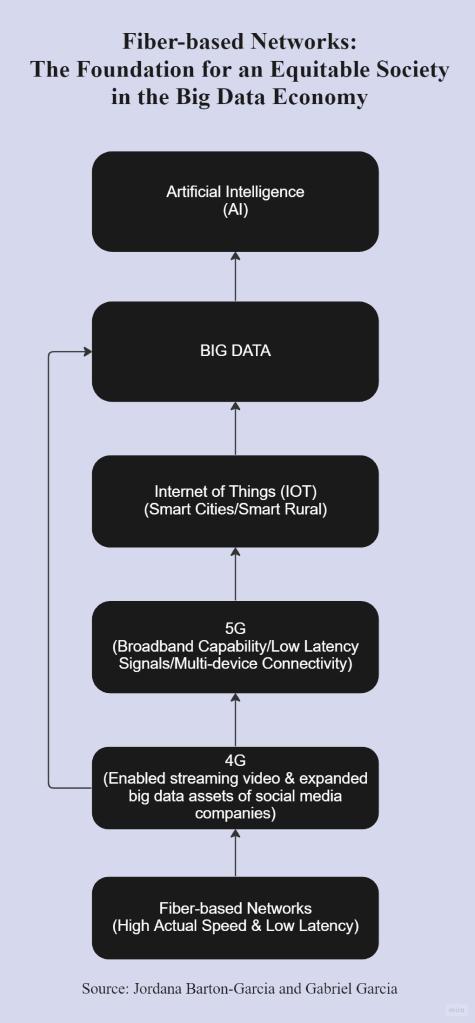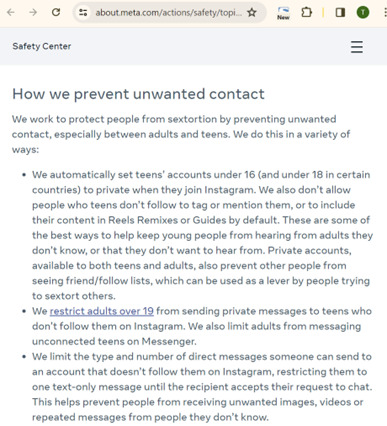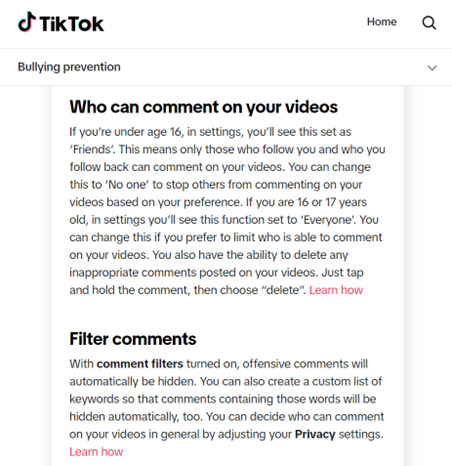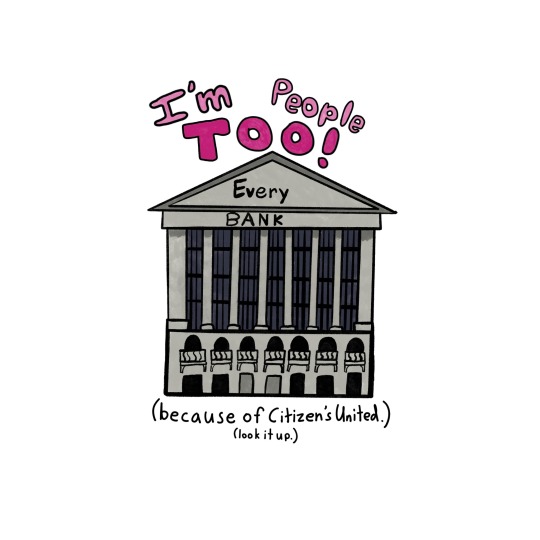#digital inequities
Text

Nipple Equality!
••••••••••••••••••••••••••••••••
Do not use my art without my permission!
🔃Reblogs are appreciated!🔃
#artists on tumblr#gender equality#gender inequality#original characters#feminist art#oc#nonbinary character#cis woman#cis man#chest hair#beard#small artist#digital artist#gimp#gimp art#nonbinary artist#finnish artist#transgender#trans nb#asexual#trans rights#feminism#topfreedom#topfree equality#topfree rights#topfree art#intersectional feminism#body posititivity
136 notes
·
View notes
Text

a baralibin commission that i just finished and that i’m super proud of so i’m sharing it here 💥💥💥 this was a blast to work on love this ship love these characters i hope people will commission me to draw my fave blorbos more often
#felestina stilton#digital art#fanart#commission#birchpunk#кибердеревня#cybervillage#konstantin baragosin#nikolai kulibin#baralibin#izhevsk yaoi#whiskey&cucumbers#class inequality love#art#artists on tumblr#cyberfarm
12 notes
·
View notes
Text
AN OPEN LETTER to THE U.S. CONGRESS
Fund the Affordable Connectivity Program NOW!
130 so far! Help us get to 250 signers!
I’m a concerned constituent writing to urge you to fund the Affordable Connectivity Program or ACP. Digital connectivity is a basic necessity in our modern world and the internet must be treated as a public utility. We use the internet to apply for jobs, perform our jobs, receive telehealth medical treatment, and pay bills, and students use it to complete homework assignments. But for millions of people in rural and urban areas, and Tribal communities, the internet is a luxury they cannot afford. Failure by Congress to fund this program will force millions of households already on tight budgets to choose between being able to stay online or potentially losing access to this essential service. If Congress doesn’t act fast, funding for the Affordable Connectivity Program will run out and more than 22 million Americans -- 1 in 6 households -- will lose this vital service. The implications of this will be devastating. In 2019, 18% of Native people living on Tribal land had no internet access; 33% relied on cell phone service for the internet; and 39% had spotty or no connection to the internet at home on their smart phone. The ACP has enrolled 320,000 households on Tribal lands -- important progress. The largest percentage gains in broadband access are in rural areas. Nearly half of military families are enrolled in ACP, as are one in four African American and Latino households. Losing access and training on using computers and the internet will have devastating impacts on all these communities as technology becomes increasingly integral to work, education, health, and our everyday lives. Without moves to address tech inequality, low-income communities and communities of color are heading towards an “unemployment abyss.” The Affordable Connectivity Program has broad bipartisan support because it is working. As your constituent, I am urging you to push for renewed funding for the ACP before it runs out in the coming weeks.
▶ Created on April 11 by Jess Craven
📱 Text SIGN PJXULY to 50409
🤯 Liked it? Text FOLLOW JESSCRAVEN101 to 50409
#JESSCRAVEN101#PJXULY#resistbot#petition#Affordable Connectivity Program#Digital Divide#Internet Access#Broadband Access#ACP Funding#Congress Funding#Public Utility#Internet Equality#Telehealth#Telemedicine#Internet Inequality#Digital Inclusion#Internet For All#Rural Connectivity#Bipartisan Support#Internet Infrastructure#FCC#ACP Support#Digital Navigation#Online Education#Remote Work#Job Access#Telecommunications#Internet Service#Internet Affordability#Digital Equity
3 notes
·
View notes
Text

VOICE OF THE VOICELESS
it will only get worse if we ignore it
Twitter: @mentalbarfwtf
Mental Barf 2023
mentalbarf.xyz
#mental barf#mentalbarf#mentalbarfwtf#voice of the voiceless#glitch#glitch art#dark art#dark glitch#digital art#gif#poverty#inequality#homeless#sensitive content#skeleton drawing#skeleton art#tezos#tezos art#objkt#objktcom#nft#digital artist#glitch artist#artists on tumblr#purple#glitch vibe#glitch aesthetic#glitch in the matrix
18 notes
·
View notes
Text
Advance digital equity today or usher in a future of egregious economic inequality - Connect Humanity
At Marconi Society’s “Decade of Digital Inclusion” conference last year, we heard from leaders in technology and digital equity. What follows is a précis of my remarks and some additional reflections for the session, ‘The (Big) Data Economy: Inclusion and Fairness’, in which I focus on the importance of digital equity now to secure a future that works for all.

When ‘good enough’, isn’t good enough
Rural and low-income communities have been expected to make-do with antiquated infrastructure and low-performing technologies offered at high costs, such as legacy copper (DSL) or coaxial cable networks, or satellite service. Time and again, communities are told not to expect fiber-based networks, but to settle for whatever technology is offered to them. In his book, Farm Fresh Broadband, Christopher Ali calls this the “politics of good enough”.
Digital inclusion — having access to quality broadband infrastructure, devices, and the digital skills to use them — is key to upward mobility. It is a portal to healthcare and education, a platform to start and grow a business, and the first rung on the ladder to a well paid job.
For much of the 20th Century, individuals were able to enter the middle class, with or without a college degree, through jobs in manufacturing and retail. Today most jobs have a digital component and employers across sectors look for candidates with well-honed digital skills. If you haven’t grown up with access to data and devices, you’re starting at a disadvantage. And if you don’t have a computer and a connection, good luck applying for a job in a world where recruitment happens almost entirely online.
Digital exclusion doesn’t just punish job seekers, it holds back the creation of jobs in the first place. When a community doesn’t have the fiber infrastructure to attract and retain 21st century businesses, it loses out on so many fronts. Fewer work opportunities. A lower tax base. Less activity in the local economy. Higher unemployment — and the economic and social costs that often follow in distressed communities.
Digital inclusion is economic inclusion
‘Digital exclusion’ is ‘economic exclusion’. By maintaining the digital divide, this politics of ‘good enough’ will perpetuate ever greater income and wealth inequality. By the same token, ‘digital inclusion is economic inclusion’ and by pursuing what Jonathan Sallet calls broadband networks ‘fit for the future’ we can start unwinding the entrenched poverty that has robbed communities of a brighter future.
We cannot miss this moment. The longer we wait to close the digital divide, the harder it’ll be for those on the wrong side to catch up. We have the technology, the established research methodologies and data sets, and best practices. We have business and operating models, philanthropy, and, in the U.S., the Community Reinvestment Act, that can support the connection of low-income, BIPOC, and rural communities that large national providers have not served equitably. Let’s heed the warning of one of our most trusted leaders in broadband policy, Blair Levin: “…our country may take the biggest backwards step any country has ever taken in increasing, rather than closing, the digital divide.” Let’s not blindly proceed on that path.
Civic participation at its best
There are local and regional ISPs, co-ops, local governments, and community partners across the country who are rolling up their sleeves and building next generation broadband networks for underserved communities. And they know better than to aim for the minimum speed, i.e., the FCC’s definition of 25/3 mbps that seems to be frozen in time, driven by a scarcity narrative in a world where accelerating technology demands require that networks ‘fit for the future’ offer far greater speeds. This is civic participation at its best — and the government, philanthropy, and the private sector must support these efforts.
Rather than wasting time entertaining inaccurate, unreliable, expensive maps (at least $44 million for the new FCC “Federal Broadband Map” by CostQuest) and catering to powerful companies that write the rules and misrepresent their service, we must engage with communities to understand their needs, their context, and work with them to shape our shared digital future. This is the work I joined Connect Humanity to do, with a special focus on the Texas-Mexico border region.
When we make investments in local communities, we support an inclusive economy and opportunities for under-represented groups to use, create, and own assets in the digital economy. That level of inclusion is necessary for a diversity of people to become the makers and shapers of fair algorithms, the owners of local and regional ISPs, the ethical managers of the internet of things, and the leaders who engage communities to make policy and law to protect people from the deleterious use of big data and AI.
Here’s a link to replay the panel.
#Advance digital equity today or usher in a future of egregious economic inequality#digital equity#AI#economic inequity#financial futures#skills sets#digital economy
3 notes
·
View notes
Text
Capitalism to Techno-Feudalism: The Evolution of Economic Systems
🌟 Dive into the intriguing world of economic evolution with our latest video "Capitalism to Techno-Feudalism: The Evolution of Economic Systems"! 🚀 Join us as we explore the rise of tech giants, wealth inequality, and strategies for navigating this digital landscape. Featuring insights from renowned economist Yanis Varoufakis.
Watch now:
youtube
#capitalism#techno-feudalism#economic systems#global financial crisis#tech giants#Yanis Varoufakis#wealth inequality#digital dominance#alternative infrastructure#regulatory environment#democratic norms#financialization#digital future#innovation#inequality#public discourse#cooperative models#societal challenges#Youtube
0 notes
Text

Religions Shape And Social Trends. READ MORE
#spiritual#spiritualpath#spiritual community#spiritual quotes#spiritual ascension#digital religion#interfaith dialogue#inequality
0 notes
Text
WEEK 10: DIGITAL CITIZENSHIP AND CONFLICT: SOCIAL MEDIA GOVERNANCE
This piece of writing will discuss online harassment, with a focus on how to best solve and deal with the issue.
WHAT IS ONLINE HARASSMENT?
Jones et al. (2013, p. 54, as cited in Haslop et al., 2021, p. 1420) define online harassment as the behaviors that are unwanted and offensive targeting directly at other people through modern technology channels, for instance, the internet. Online harassment can exist in various forms, for example: directly sending abuse messages, sexual images, spreading rumors, and so forth (Haslop et al., 2021, p. 1420).
THE REALTITY
According to Pew Research Centre & Southern and Harmer (2017; 2019, as cited in Haslop et al., 2021, p. 1420), online harassment is more likely to happen to women than men. A YouGov survey, including 2121 women and 1738 male participants, reports that sexual images have been sent to 40% of women participating in the survey without their requests, while only 26% of male participants have been sent those images (Smith 2018, as cited in Haslop et al., 2021, p. 1420). This phenomenon can be explained through the “nature” of online space, which is now considered a “public space”, where if women want to ensure their safety, they must exclude their presence from the space (Vitis & Gilmour, 2016, p. 339). Furthermore, Keraian & Megarry (2014; 2014, as cited in Vitis & Gilmour, 2016, p. 339) add that once women choose to participate in the digital space, they must take harassment and attack as an apparent and normal experience.
THE CONSEQUENCES
Being harassed online, numerous women chose to censor themselves to minimize the risk of further online harassment in the future (Lenhart et al., 2016, as cited in Haslop et al., 2021, p. 1421). Others change their names in the online world, reduce their time appearing online, become more selective in choosing what online site to use, or even shut down every online account (Gumbus & Meglich, 2013, p. 48; Franks, 2012, as cited in Vitis & Gilmour, 2016, p. 339). The “nature” of the online space causes these negative consequences, leading to demotivation and a decrease in women's engagement with online sites (Haslop et al., 2021, p. 1421).
HOW SOCIAL MEDIA PLATFORMS, AS ONLINE PLATFORMS, HELP FIGHT AGAINST ONLINE HARASSMENT?
Meta’s social media platforms, including Facebook, Instagram, and Messenger, and TikTok are now putting a lot of effort into controlling and preventing online harassment. Meta has used many strategies to control and prevent this issue, such as users reporting inappropriate content (e.g.: sexual images or offensive content) to Meta (Figure 1), Meta limiting and restricting connections between some specific user groups (Figure 2), etc. More information can be found on Meta: Prevent bullying and harassment). As for TikTok, the platform allows its users to control who can message them and who they can send messages to by having different options for setting their direct message (Figure 3); offensive comments can be filtered, and users can control who can comment under their videos (Figure 4); other strategies are shown in TikTok: Bullying prevention. The strategies that are used by these social media platforms help remove content that is harmful to users and allow users to actively protect themselves.

Figure 1: Meta's strategies in controlling and preventing online harassment

Figure 2: Meta's strategies in controlling and preventing online harassment

Figure 3: TikTok's strategy in controlling and preventing online harassment

Figure 4: TikTok's strategies in controlling and preventing online harassment
ONLINE HARASSMENT MUST BE SOLVED FROM THE ROOT
Although social media platforms have used many strategies to prevent and control online harassment as mentioned above, those strategies are unbale to fully solve the issue. Schoenebeck et al. (2023, p. 4) claim that people’s behavior will not be changed after their social media accounts are banned or their inappropriate content is removed; additionally, removing content or banning users do not motivate people to not harass others in the online world.
THE SOLUTIONS FOR DEALING AND SOLVING ONLINE HARASSMENT
To truly and fully deal with online harassment, it is suggested that education, especially digital citizenship education, must be involved. The reason is that digital citizenship education teaches people to behave legally, ethically, and safely when they are appearing in the online world (Heath, 2018, p. 343). In addition, digital citizenship education also makes people become one of the three types of citizens, including “personally responsible citizens”, “participatory citizens”, and “justice-oriented citizens” (Heath, 2018, p. 345) or makes people become a citizen that has all those three characteristics. Digital citizenship education educates people on how they should behave online and in the long run, it can change their behaviors.
EXAMPLE
Thanks to digital citizenship education, some people become “participatory citizens," which refers to citizens who engage and participate in the community in order to solve social problems (Heath, 2018, p. 345). Anna Gensler (IG account: Instagranniepants) is a highlight example. As she has been harassed online and talked disrespectfully on online dating sites, as an artist and as a digital citizen, she has decided to fight against online harassment through her drawings (Figure 5). As stated in the article, “The intention of Gensler’s art is thus to ‘objectify back’, educate, name inappropriate behavior, punish perpetrators and assert herself.” (Vitis & Gilmour, 2016).

Figure 5: Anna Gensler as a participatory citizen
CONCLUSION
In conclusion, online harassment causes digitized inequality for women as it demotivates them from participating in the digital world. Although various social media platforms, such as Facebook, Instagram, and TikTok, are now putting efforts into controlling and preventing online harassment, they are still solving the surface of the issue. In order to fully solve online harassment, digital citizenship education is the most prioritized strategy.
REFERNCES
Haslop, C., O’Rourke, F., & Southern, R. (2021). #NoSnowflakes: The toleration of harassment and an emergent gender-related digital divide, in a UK student online culture. Convergence: The International Journal of Research into New Media Technologies, 27(5), 1418–1438. https://doi.org/10.1177/1354856521989270
Heath, M. K. (2018). What kind of (digital) citizen? The International Journal of Information and Learning Technology, 35(5), 342–356. https://doi.org/10.1108/ijilt-06-2018-0067
Schoenebeck, S., Lampe, C., & Triệu, P. (2023). Online Harassment: Assessing Harms and Remedies. Social Media + Society, 9(1), 1–12. https://doi.org/10.1177/20563051231157297
Vitis, L., & Gilmour, F. (2016). Dick pics on blast: A woman’s resistance to online sexual harassment using humour, art and Instagram. Crime, Media, Culture: An International Journal, 13(3), 335–355. https://doi.org/10.1177/1741659016652445
#swinburne#mda20009#week10#online harassment#participatory citizen#digital citizenship#digitized inequalities#women#social media#humour#digital space
0 notes
Text
Global Economy in Crisis: Davos Meeting Calls for Action on Climate, Inequality, and Innovation
#agriculture #climatechange #coordinatedaction #Davosmeeting #Digitalization #educationandinfrastructure #geopoliticalrisks #globaleconomicgrowthforecast #globalrecession #globalstockmarketdownturn #healthcare #industryleaders #inequality #innovationandtechnology #sustainableeconomicsystem #technologicaldisruption #tradetensions
#Business#agriculture#climatechange#coordinatedaction#Davosmeeting#Digitalization#educationandinfrastructure#geopoliticalrisks#globaleconomicgrowthforecast#globalrecession#globalstockmarketdownturn#healthcare#industryleaders#inequality#innovationandtechnology#sustainableeconomicsystem#technologicaldisruption#tradetensions
0 notes
Text
Tom A. I. Riddle: The Dark Side of the Digital Horcrux
Artificial Intelligence has taken us by storm. In my blog this week, I look at the dark side of AI. From the control by a select few to its potential social and global disruptions, this essay delves into the digital horcrux that is AI. #AI #DigitalHorcrux
Over the past weekend, I had the opportunity to dine with some very smart people: engineers and entreprenuers, all alumni of GIKI, Pakistan. They had insightful things to say about a range of issues, from the oil and gas sector to American geopolitical power, the economy, and all the way to AI and industrial automation.
Continue reading Untitled

View On WordPress
#A.I.#AI and Democracy#AI Bias#AI Disruption#Artificial Intelligence#Data Privacy#Digital Transformation#Facebook#Global Peace#GPT-4#Horcrux#Income Inequality#Power#Social Media#Tom Riddle#Tom Riddle&039;s Diary#Universal Basic Income#Western Hegemony
1 note
·
View note
Text
thinking about dropping my current elective course and actually concentrate on a compulsory one that's actually much more interesting
#health inequality go ↘️↗️ wheee#the digital inequality course i thought would be interesting turned out to be so fucking boring 😭
0 notes
Text
INTERNATIONAL DAY FOR ERADICATION OF POVERTY
It would be nice if the poor were to get even half of the money that is spent in studying them. We are providing digital posters for 7 days free trial
#posters#poster design#digital poster#business#trending#today on tumblr#history today#facebook#poverty#inequality#homelessness#social justice#society
0 notes
Text
They too want alter the world
#DavidRockefeller"Trilateral Commission":#elite appointed by #dollar
2023:Year One of the #NewWorldOrder
#climatechange,#digital revolution,#inequalities
#inclusive #capitalism is an #oxymoron
all the #rules of #globalists are for you and me-not them
https://salvatoremercogliano.blogspot.com/2023/08/they-too-want-alter-world.html?spref=tw
#david rockfeller#elite#trilateral commission#2023 new world order#climate change#digital#inequalities#inclusive#oxymoron
0 notes
Text
The Global Divide Widens: How the Pandemic Caused the First Rise in Between-Country Income Inequality in a Generation

The COVID-19 pandemic, an unprecedented global crisis, has left no corner of the world untouched. As nations struggled to combat the virus and its economic fallout, an alarming consequence emerged: the first rise in between-country income inequality in a generation. The pandemic's impact on economies has been uneven, leading to significant disparities in wealth and prosperity among nations. This article delves into the factors behind this growing global divide, its consequences, and the urgent need for collective action to address income inequality on an international scale.
The Global Economic Shock
When the pandemic struck, nations scrambled to implement restrictions, shutdowns, and social distancing measures to contain the spread. These actions disrupted supply chains, hampered production, and forced many businesses to close temporarily or permanently. Consequently, economies experienced severe contractions, leading to widespread job losses and reduced consumer spending.
However, not all countries were affected equally. Advanced economies with robust healthcare systems and strong fiscal policies managed to weather the storm better than developing or low-income nations. They were able to provide extensive stimulus packages to support businesses and citizens, preventing a complete economic collapse. On the other hand, many developing countries lacked the resources and capacity to respond effectively, exacerbating their economic struggles.
The K-Shaped Recovery
As the pandemic raged on, a phenomenon known as the "K-shaped recovery" emerged, where different segments of society experienced divergent economic trajectories. This concept extended to the global level as well, highlighting the varying degrees of impact on countries.
Some developed nations witnessed a swift recovery due to their ability to adapt to remote work and technology-based solutions. At the same time, several emerging economies faced prolonged recessions and setbacks, pushing them further behind. The disparity in economic growth between these two groups of countries widened, contributing to the rise in between-country income inequality.
Trade and Travel Disruptions
International trade and travel restrictions during the pandemic significantly affected economies' interconnectedness. Many nations rely heavily on trade partnerships and tourism for economic growth, but the restrictions disrupted these crucial income streams.
For countries heavily reliant on exports, reduced global demand and logistical challenges hampered their economic recovery. Similarly, nations dependent on tourism suffered greatly as travel restrictions kept tourists away, leading to an acute downturn in revenue and employment in the hospitality sector.
Vaccine Inequality and Economic Recovery
Another critical factor influencing the between-country income inequality was vaccine distribution. Access to vaccines played a vital role in determining a nation's ability to control the virus, reopen their economies, and regain economic stability.
While some wealthier nations procured vaccines in abundance and achieved high vaccination rates, many developing countries struggled to secure sufficient doses. The resulting delay in reaching herd immunity and reopening their economies further widened the gap between countries' economic recoveries.
Tech Advancements and Disparities
During the pandemic, technological advancements and digitalization took center stage as businesses and individuals shifted to remote operations and online services. Developed countries, equipped with robust digital infrastructure and skilled workforces, were able to adapt more effectively to the changing landscape.
In contrast, digital disparities in developing countries limited their ability to capitalize on technology's potential for economic growth. The lack of access to high-speed internet and digital skills hindered their participation in the global digital economy, perpetuating income inequality between nations.
Environmental and Social Impact
The pandemic's impact on income inequality goes beyond just economic measures. Environmental and social factors also played a role in exacerbating global disparities.
As the focus shifted to combatting the virus, several environmental initiatives and climate change efforts took a backseat. Developing countries, often bearing the brunt of environmental challenges, lacked the resources to prioritize sustainability during the crisis.
Moreover, vulnerable communities, already facing social inequalities, were disproportionately affected by the pandemic. The lack of adequate healthcare, education, and social safety nets in some nations exacerbated the divide between the rich and poor, both within and between countries.
Urgent Call for Global Solidarity
The rise in between-country income inequality during the pandemic highlights the urgent need for global solidarity and cooperation. Addressing this issue requires collective efforts and inclusive policies that prioritize equitable economic recovery.
International organizations, governments, and businesses must come together to ensure fair vaccine distribution, support sustainable development goals, and promote digital inclusivity. Efforts to reduce trade barriers and foster fair trade practices can also contribute to bridging the income gap.
Conclusion
The COVID-19 pandemic has been a catalyst for unprecedented changes on a global scale. While economies are slowly recovering, the rise in between-country income inequality remains a significant concern. The pandemic exposed existing fault lines and disparities, emphasizing the need for a more equitable and resilient approach to global economic growth.
As we navigate the aftermath of the pandemic, it is crucial to prioritize international cooperation and sustainable solutions. Only through collective action and shared commitment can we hope to address the challenges posed by income inequality and build a more inclusive world for all nations.
Disclaimer: This article is for informational purposes only and does not constitute financial, medical, or legal advice. Please consult with a professional for personalized advice.
What's In It For Me? (WIIFM)
In this eye-opening blog article, you will gain a deeper understanding of the far-reaching consequences of the pandemic on global income inequality. Discover how the COVID-19 crisis has widened the gap between nations' economic prosperity, impacting both developed and developing countries. Learn about the factors behind this unprecedented rise in between-country income inequality and explore the urgent call for collective action to address this pressing issue. Whether you're concerned about the global economy, social justice, or sustainable development, this article will provide valuable insights that resonate with every global citizen.
Call to Action (CTA)
Ready to explore the impact of the pandemic on between-country income inequality? Click here to read the full blog article and be part of the conversation about building a more equitable and inclusive world. Together, we can drive change and work towards a brighter future for all nations.
Blog Excerpt
The COVID-19 pandemic has left an indelible mark on the world, and one of its most concerning consequences is the first rise in between-country income inequality in a generation. As economies faced unprecedented challenges, the disparity in economic growth between nations widened significantly. Developed economies with robust healthcare systems and fiscal policies seemed to fare better, while many developing countries struggled to respond effectively, exacerbating their economic struggles. This blog article delves deep into the factors contributing to this global divide, the K-shaped recovery phenomenon, and the impact of vaccine distribution. It emphasizes the urgent need for international cooperation and sustainable solutions to bridge the income gap and foster a more inclusive world.
Meta Description (320 characters)
Discover the first rise in between-country income inequality in a generation due to the pandemic. Learn about the impact, causes, and urgent call for collective action in this insightful blog article.
#Pandemic-induced global income inequality#Between-country wealth disparity#Economic impact of COVID-19#First rise in income inequality#Global economic divide#Income inequality between nations#K-shaped economic recovery#COVID-19 and income disparity#Developing countries' economic struggles#Pandemic's unequal economic impact#Wealth gap during COVID-19#Vaccine distribution and economic recovery#Economic consequences of the pandemic#Global financial inequality#Sustainable solutions for income inequality#Addressing between-country wealth gap#COVID-19's impact on emerging economies#Digital divide and economic inequality#Social justice and pandemic aftermath#Environmental challenges and income inequality#Economic resilience during COVID-19#Bridging global income gap#International cooperation for economic recovery#Impact of trade disruptions on economies#Inclusive growth post-pandemic#Income security in a pandemic-hit world#Between-country prosperity divide#The pandemic and developing nations#Post-COVID-19 economic disparities#Building a fairer global economy
0 notes
Text

#oc art#art#my art#artists on tumblr#beginner artist#art tags#digital art#original art#economic inequality#bank
0 notes
Photo

[Insert message about gender inequality here]
••••••••••••••••••••••••••••••••
Do not use my art without my permission!
🔃Reblogs are appreciated!🔃
#digital art#body posititivity#artists on tumblr#nonbinary artist#small artist#body hair#gimp#gimp art#finnish artist#original art#feminism#gender equality#gender inequality#feminist art#nudity#drawn with a mouse
1 note
·
View note